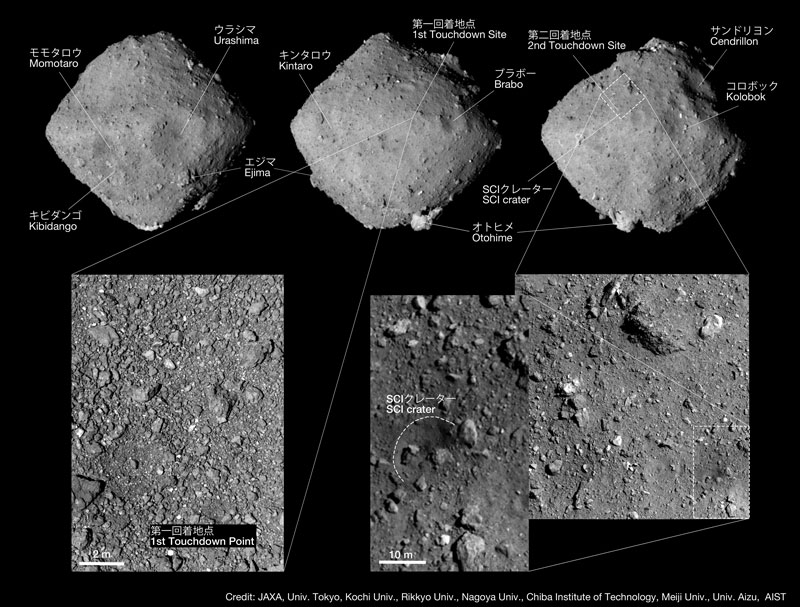Exhibits
Asteroid Ryugu explored by Hayabusa2

The Japanese probe Hayabusa2 explored the asteroid Ryugu from June 2018 to November 2019, touching down twice to collect samples, and conducting an artificial crater formation experiment with a Small Carry-on Impactor (SCI).
Ryugu has a diameter of about 900 meters and its surface is covered with rocks of various sizes. It is thought that it was originally a larger asteroid that was disrupted by collisions with other asteroids, and that the fragments accumulated to form Ryugu.
More than 100 craters have been identified on Ryugu’s surface. The largest is a 300-meter diameter crater named Urashima. Like wrinkles appearing on a person's face with age, craters form on the surface of planetary bodies with time, and the age of the planetary body can be estimated from the number of craters.
The relationship between impact energy and crater size on Ryugu’s surface was revealed by an artificial impact experiment, allowing us to determine how long it would take to create a crater with a diameter of 100 meters.
There are 10 craters with diameters larger than 100 meters on Ryugu’s surface. Because it would take about eight million years to create these craters, the age of Ryugu's surface is estimated to be about eight million years.
Responsibility for wording of the article
Tomokatsu Morota, Associate Professor, Earth and Planetary Physics/Earth and Planetary Environmental Science [2022]